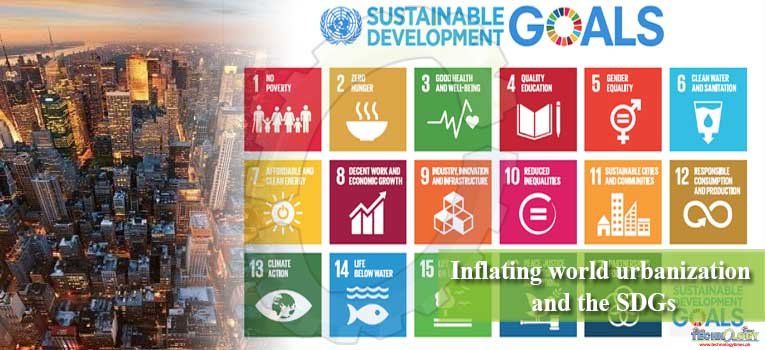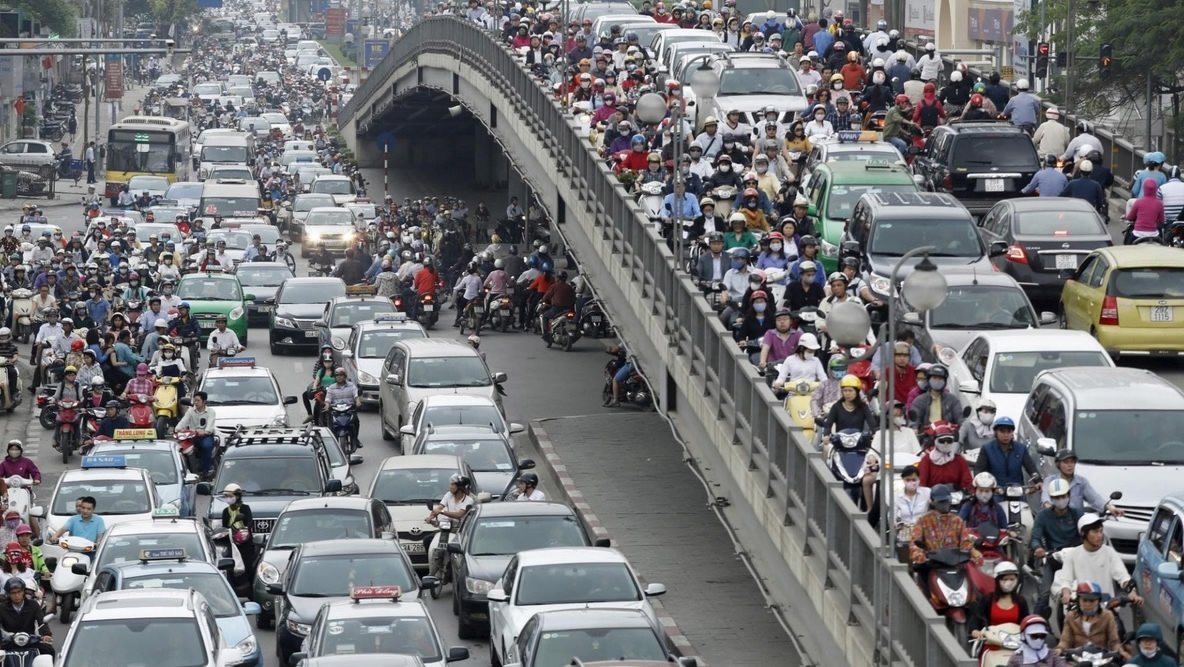Currently, around two third of the world’s population inhabits the urban areas— ever witnessed in the history. Are we overlooking the urbanization in the pursuit of SDGs?
 Urbanization was not always a fringe issue. Today, the world is swarming with the migration influxes particularly towards largest and capital cities. Urbanization has surpassed the national borders and now, the competition is to grasp the international mega cities.
Urbanization was not always a fringe issue. Today, the world is swarming with the migration influxes particularly towards largest and capital cities. Urbanization has surpassed the national borders and now, the competition is to grasp the international mega cities.
The foremost reasons of such influxes are well understood— seeking educational, social, political and economical opportunities. Currently a whole lot of millennials have been propelled to migrate to urban areas in droves mainly because of such recognized benefits. Why should they not?
Let’s draw a sketch of all the human souls on planet earth to demonstrate the urbanization. As of February 2019, the total population of the world exceeds 7.71 billion people, and still counting.
More than half of this population inhabits the urban areas (ever witnessed in the history). Although one thing is inexplicit that being in a city, a rural ambiance is preferred even for restaurants, living and workplaces.
How were the things previously?
Cities were not teeming with people just even 50 years back. In 19th century, only rich countries across America, Europe and Australasia possessed bigger urban population (>80%). An approximate equilibrium among the rural and urban populations was observed in 2007— both at 3.33 billion people.
Now the tables have turned. Specially the largest and capital cities in the world are harboring the higher proportions of urban population— Delhi with over 28 million; Cairo with 20 million; and Mexico City at 21 million etc.
How would it be in 2050?
Whenever we wonder to live in 2050, we fancy of the high-tech cars, robots, nano-foods, drones and tech assisted shape-shifting homes. But a lot needs to be done before hand. Because 9.8 billion is the number to expect in 2050 and more than twice of worlds’ rural population (3.1 billion) will be living in urban setting,
(approximately 6.7 billion) — that is 68% of world population (54% upsurge than 2016) according to the UN World Urbanization Prospects. Well, get ready to witness almost twice the volume of city traffic than todays’ in the upcoming years— I wish future generation may have flying drone-cars instead.
Why does urbanization matter at all?
There are tons of reports about social problems and exclusion in cities primarily linked to urbanization. This will only get worse with the increasing rate of urbanization— unless robots would be willing to share the burden of social anxiety at the least. Bruce Katz (Brookings Institution’s author) precisely concludes that the “metropolitan revolution” hordes a lot of physical, psychological and socio-economic issues.
Social Implications
If you have not ever felt frustrated for not finding a parking lot or a seat in a crowded metro, you are living in the world’s best city be assured. We have a whole lot of consistent issues with the urbanization.
For example, the urban heat island (75% of the global energy consumption), climate change (80% of greenhouse gas emissions), increasing water and air pollution, carbon emissions, homelessness, inadequate slums, traffic congestion, rapid and unplanned urban growth without necessary infrastructure and policies implementation, social exclusion, drug abuse, crime, the loss of prime agricultural land, urban sprawl, overcrowding, and poverty are the ones reported by many social scientists. One can imagine the circumference of such issues is not limited rather beyond limits.
Would you regard the current sweep of climate change across the globe naturally triggered?
Resources Scarcity
Low-to-middle income countries top the list of fast track urbanization and resources scarceness. For example, Lagos (Nigeria’s capital) is expected to have 24 million inhabitants (almost tripled) by 2030, which previously had 7.2 million in 2000.
While, Nepal and Mali will have their urbanization more than quadrupled. Think of your stagnant resources (supplies), with only increase in demand at a constant pace. It’s like accommodating two patients on a single hospital bed!

Max Roser— founder and editor of online database “Our World in Data”, says that an imbalance has been created in “supply and demand” (e.g. in commodities, resources and infrastructures). Bulk and rapid influx of population into urban areas are the foremost reasons for this. San Francisco depicts the true example of this (i.e. since 2010 new jobs have outdone additional homes by a ratio of 8 to 1).
Extent of Urbanization
The urbanization is not only affecting the human beings but the birds, animals and plants are facing the severe dangers of extinction. There are a whole lot of reports on the adverse effects of urbanization on natural flora and fauna in many ways. Now a days, smog is an evident example of such issues that is equally harmful for all living beings.
Does not all such inferences pose a challenge for developing sustainable cities and communities that ensure the Sustainable Development Goals (SDGs)?
UN’s SDGs
Current exponential population growth alongside swift urbanization has stroked unusual challenges towards achieving SDGs. All such concerns have made UN to implement the 17 SDGs effective since 2016 until 2030, which aim to end poverty, protect the planet and ensure that all people enjoy peace and prosperity around the globe.
Globally there is a rapid influx of initiatives, concentrating from a single to multiple SDGs, on national and international levels whereas FAO, UNESCO, IHME, WHO JMP, and IEA being the major players and influencers alongside the academia and industry.
Nevertheless, there is an urgent need to respond to this crisis in a more adaptive and innovative way. We can dwell on the current technological revolutions and international collaborations for this. Following some rational ladders in improving the rural life, we can pave the way to ensure SDGs and overcome the urbanization problem.
The need of the hour
There is not even a single doubt that the “economic engines” of the global economy are the “cities”, thereby spawning 80–95% of the world’s GDP. Nevertheless, gigantic congestions in the urban areas have not only provoked challenges in sustainability but have also raised questions in the achievement of SDGs.
The need of the hour is to tackle the issues, caused by urbanization, holistically.